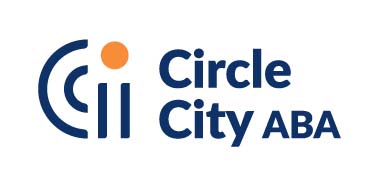
Toilet training is a significant milestone in a child’s life, and it can be especially challenging for parents of autistic children. Understanding when your autistic child is ready for toilet training is crucial for a successful transition. This process requires patience, persistence, and the right approach to accommodate the unique needs of your child. At Circle City ABA, we understand these challenges and are here to guide you through this important journey.
Understanding the Readiness for Toilet Training
Recognizing the signs that your autistic child is ready for toilet training is the first step. Each child is unique, and readiness can vary greatly. Here are some key indicators to watch for:
Physical Readiness
- Dry Periods: One of the primary signs your child is ready for toilet training is staying dry for at least two hours during the day or after naps. This indicates that their bladder muscles are developing the necessary control.
- Regular Bowel Movements: Consistent bowel movements suggest that your child is developing the ability to predict when they need to use the bathroom.
- Motor Skills: Your child should have the ability to walk to and from the bathroom, pull down their pants, and sit on the toilet.
Cognitive Readiness
- Awareness of the Need to Go: Your child may start to show signs that they recognize when they need to go to the bathroom. This can be indicated by body language, facial expressions, or stopping an activity.
- Understanding Instructions: Being able to understand and follow simple instructions is essential for toilet training. This includes instructions like “go to the bathroom” or “sit on the toilet.”
- Interest in Toilet Activities: Showing curiosity about the toilet, observing others use the toilet, or wanting to wear underwear are positive signs of readiness.
Behavioral Readiness
- Communication: Your child should be able to communicate the need to use the toilet through words, gestures, or signs.
- Desire for Independence: An interest in independence and a desire to complete tasks on their own can be a strong indicator that your child is ready for toilet training.
- Discomfort with Dirty Diapers: Showing discomfort when their diaper is wet or dirty can indicate that your child is ready to transition to using the toilet.
Tips for Successful Toilet Training for Autistic Children
Once you recognize the signs of readiness, it’s time to start preparing for the toilet training process. Here are some tips to ensure a smooth and successful transition:
Create a Routine
Autistic children often thrive on routine and predictability. Establishing a consistent toilet training schedule can help them understand and anticipate the process. Take your child to the bathroom at regular intervals, such as every hour or after meals.
Use Visual Supports
Visual supports like picture schedules, social stories, or visual cues can help your child understand the steps involved in toilet training. Visual aids can also provide a sense of structure and reduce anxiety.
Positive Reinforcement
Celebrate successes, no matter how small. Positive reinforcement, such as praise, stickers, or small rewards, can motivate your child and make the toilet training process more enjoyable. Be sure to celebrate each milestone, from sitting on the toilet to successfully using it.
Be Patient and Consistent
Patience and consistency are key. There will be setbacks, and progress may be slow. It’s important to stay calm and positive, even when accidents happen. Consistent responses and maintaining a positive attitude will help your child feel more comfortable and confident.
Consider Sensory Issues
Many autistic children have sensory sensitivities that can affect toilet training. The texture of toilet paper, the sound of flushing, or the feel of the toilet seat can be overwhelming. Addressing these sensory issues, such as using flushable wipes or a padded toilet seat, can make the experience more comfortable for your child.
Seek Professional Support
If you’re finding the toilet training process particularly challenging, consider seeking support from professionals. At Circle City ABA, we offer tailored programs to assist with toilet training autistic children. Our experienced therapists can provide guidance, strategies, and support to make the process as smooth as possible. For more information about Circle City ABA and to inquire about starting ABA Therapy services, please contact our team.
Conclusion
Toilet training an autistic child requires understanding, patience, and the right strategies. By recognizing the signs of readiness and implementing a structured approach, you can help your child achieve this important milestone. Remember, every child is unique, and it’s important to celebrate each step of progress. At Circle City ABA, we’re here to support you and your child through this journey, providing the resources and expertise needed for successful toilet training.


